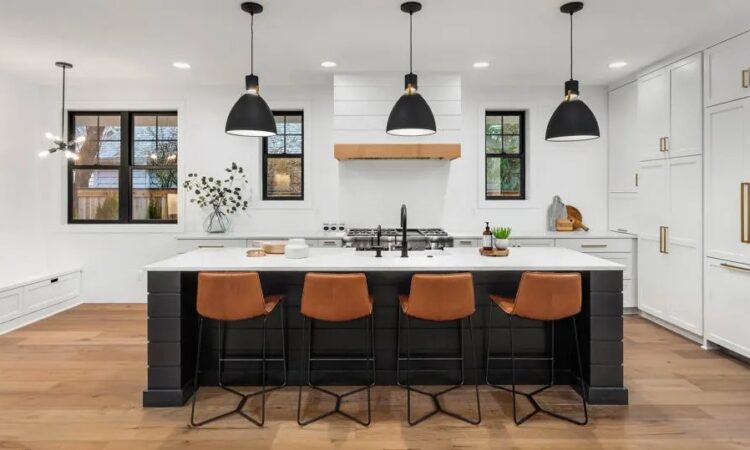
Renovating a kitchen is a significant project that requires thoughtful planning to ensure the space is both stylish and functional. From optimizing storage to integrating the latest appliances, here’s a comprehensive guide to creating your dream kitchen.
1. Prioritize your layout
Work triangle: the classic work triangle links the sink, stove, and refrigerator. Keep these three points within a comfortable distance to minimize movement while cooking.
Zones and workflow: create zones for different tasks like food preparation, cooking, cleaning, and storage. Place your main prep area near the sink and trash for easy access.
Open floor plans: consider an open floor plan if you entertain often. An open kitchen-dining-living space fosters social interaction while allowing you to cook and socialize.
2. Optimize storage
Vertical storage: maximize storage by extending cabinets to the ceiling. Use these upper cabinets for less frequently used items.
Drawer organization: drawers provide easier access to pots, pans, and utensils. Insert organizers and dividers to keep everything neat.
Pull-out shelving: pull-out pantry shelves or corner carousels can access hard-to-reach spaces and maximize utility.
Hidden storage: use the space under kitchen islands, toe kicks, and above the refrigerator for hidden storage. Consider installing charging stations or appliance garages to hide electronic devices.
3. Choose modern appliances
Energy efficiency: look for energy star-rated appliances that reduce energy consumption. Induction cooktops and convection ovens are also efficient and effective.
Smart technology: smart refrigerators, ovens, and dishwashers can be controlled via smartphone apps, making meal preparation and maintenance more convenient.
Built-in appliances: consider built-in appliances like microwaves, coffee makers, and wine coolers to streamline your countertops.
4. Select durable and stylish materials
Countertops: quartz countertops are low-maintenance, heat-resistant, and available in various styles. Granite and butcher block offer natural alternatives.
Cabinet finishes: opt for wood, laminate, or lacquer finishes to match your aesthetic. Two-tone cabinets add depth and contrast.
Flooring: tile, hardwood, and vinyl are durable options for kitchen flooring. Choose a non-slip finish for safety.
5. Add lighting for functionality and ambiance
Task lighting: install under-cabinet lighting to illuminate your prep spaces and make cooking easier.
Ambient lighting: overhead lighting provides overall illumination. Recessed or flush-mount lights are ideal for this.
Accent lighting: add pendant lights over islands or a chandelier over the dining table to create focal points and set the mood.
6. Plan your budget
Realistic costs: research typical kitchen renovation costs and allocate extra for unexpected expenses.
Prioritize investments: spend more on long-term investments like appliances and cabinetry. Save on areas like fixtures, hardware, and paint.
Diy vs. Professional: consider which tasks can be done yourself (e.G., painting, light installations) and which require professionals (e.G., electrical, plumbing).
Conclusion
A kitchen renovation is an exciting opportunity to improve both the form and function of your home. By carefully planning the layout, optimizing storage, selecting efficient appliances, and choosing quality materials, you can create a kitchen that aligns with your lifestyle and personal style. Make sure to plan your budget and seek professional advice when needed to ensure a successful, stress-free renovation.
